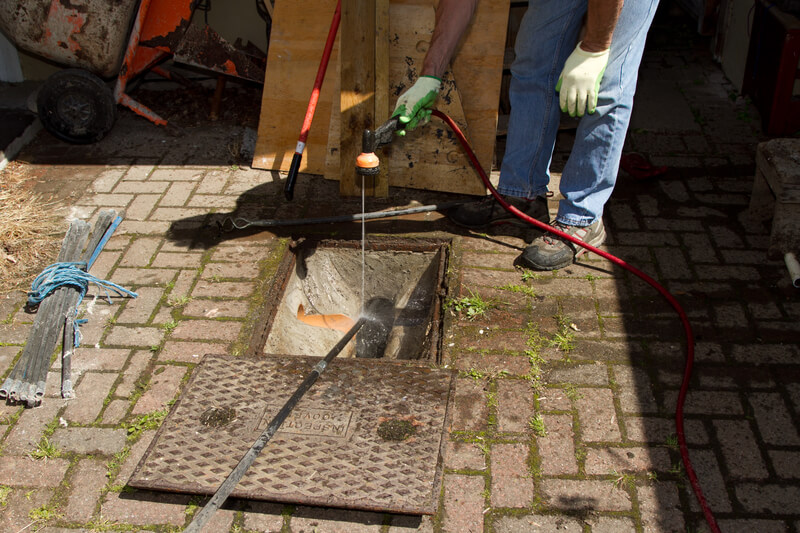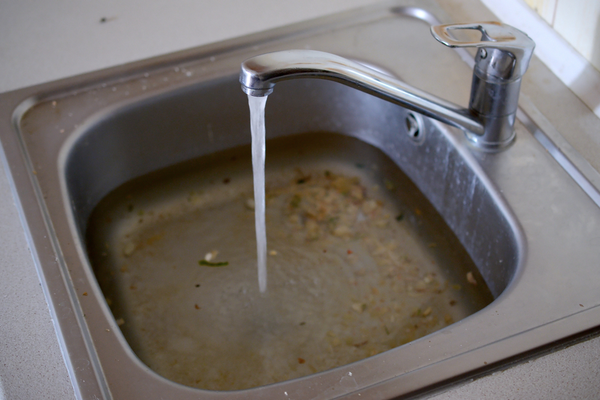Advice for Addressing a Blocked Drain Prior to Hiring Expert Plumbers
Start NowThe article directly below involving Tips for Dealing with Clogged Drains and Sewer Lines is really enlightening. Read it for your own benefit and decide what you think about it.

Introduction
Dealing with an obstructed drainpipe can be an irritating experience, interfering with day-to-day tasks and possibly causing damages to your building. Nevertheless, before reaching out to pipes specialists, there are actions you can require to resolve the problem yourself. In this overview, we'll check out do it yourself remedies and safety nets to deal with an obstructed drain efficiently.
Determining the Issue
The very first step in attending to an obstructed drainpipe is identifying the signs. Sluggish drain, gurgling noises, foul odors rising from drains, or water backing up are common indicators of an obstructed drain. Identifying these indicators early can help avoid better difficulties.
Typical Sources Of Blocked Drains
Understanding the elements that contribute to drain pipes obstructions is necessary for reliable resolution. Typical offenders include hair, soap residue, oil, food particles, and international objects like hygienic products or paper towels. Tree origins invading below ground pipes can likewise trigger significant obstructions.
DIY Solutions
For minor obstructions, several do it yourself solutions can be effective. Putting boiling water down the drain can assist dissolve grease and particles. Sodium bicarbonate and vinegar or a combination of salt and cooking soda can act as all-natural cleaners. Using a plunger or plumbing serpent to remove obstructions is another choice.
Tools and Equipment
Having the right tools on hand can make DIY drainpipe cleansing a lot more effective. A plunger is a versatile tool for removing obstructions in sinks, bathrooms, and showers. A pipes snake or auger can reach much deeper clogs, while drain cleaning chemicals can be used very carefully for stubborn clogs.
Safety nets
To avoid future obstructions, adopting preventive measures is crucial. Mount drainpipe guards or strainers to catch hair and debris prior to they get in the pipelines. Frequently flush drains with hot water to liquify oil buildup, and avoid dealing with grease or strong waste down the tubes.
When to Call an Expert
While do it yourself options can settle minor obstructions, particular indicators show the demand for expert help. Persistent clogs, foul odors regardless of cleaning up efforts, or numerous drains pipes backing up simultaneously are red flags that necessitate professional intervention.
Choosing the Right Plumbing Solution
When selecting a pipes solution, take into consideration variables such as experience, licensing, and customer testimonials. Select a trusted plumber with a track record of quality craftsmanship and clear prices practices.
Price Considerations
The price of professional drain cleaning company can vary depending on the severity of the blockage and the plumbing's prices. Request quotes from multiple providers and inquire about any type of service charges to make sure openness and avoid shocks.
Safety Measures
When attempting DIY drainpipe cleaning, focus on safety and security. Use protective gloves and eyewear to prevent contact with damaging chemicals or bacteria. Never blend various drainpipe cleansing products, as this can create hazardous fumes.
Situation Researches
Real-life examples show the efficiency of do it yourself services and the importance of prompt specialist intervention in solving drainpipe blockages.
Verdict
By following the pointers laid out in this guide, you can efficiently tackle obstructed drains and avoid future plumbing problems. Whether opting for DIY remedies or looking for specialist assistance, punctual action is crucial to keeping a healthy and balanced plumbing system and preserving the stability of your home.
How to Clear a Clogged Drain Yourself (And When to Call In the Professionals)
What Can Clog a Drain
Dirt Skin flakes Hair Grease Soap scum Food Offset pipes Tree roots Small objects Mineral buildup DIY Tricks to Unclog a Drain
You can fix this! Once you have identified the source of the clog (or have a vague idea), you can try one or a combination of these fixes in order to clear your plumbing.
Wire Hanger or Snake
Untangle and clear out hair from a drainpipe with a homemade snake. Use a straightened-out wire hanger with a 90-degree angle hook to locate the clog and drag out any unwanted material.
Remember not to push the clog further down to where the wire hanger cannot reach! If you need to follow up with a plunger, give it a try. Your efforts might be more successful after it’s been wire-snaked.
If you want to get fancy and don’t have a wire hanger to spare, head to the store and pick up a hand-operated drain snake. You can get one for $10-$30. It may save you the hassle, and provide additional length to reach deep into the clogged pipe.
Plunger
A cup plunger has a suction cup attached to a wooden handle. The rubber creates a seal around the drain, and increases the pressure force of the plunger.
Plunge for 30-second increments to loosen the clog. This may need to be repeated over the course of 15-20 minutes. Once plunged, run the water to flush the remaining material out of the drain.
Remember– never use a plunger if you have used a chemical drain cleaner. These chemicals can splash up from the force of the plunger and cause serious injury or burns.
Boiling Water
Hot water can sometimes break up materials into a flushable amount. Dirt, grease, and soap buildup requires heat in order to unstick from surfaces.
Take your kitchen kettle and heat your water to a boil. Once it reaches a rolling boil, pour it directly down the drain into the blockage. Carefully follow with plunging, if necessary.
Don’t worry if this takes more than one try! It can often take multiple kettles and repeated plunging in order to clear a particularly stubborn clog.
Chemical Drain Cleaner
As a last resort, pick up a bottle of chemical drain cleaner. Drain-cleaning chemicals are potent, and not very good for the environment.
You may need to wear protective eyewear in gloves before handling your bottle of chemical drain cleaner. Follow the instructions printed on the bottle, and flush with water as soon as the instructions allow. Do not follow with plunging.
Baking Soda and Vinegar
As a safer alternative to chemical drain cleaner, baking soda and vinegar can create a chemical reaction that clears tough clogs.
Combine one cup of cleaning vinegar with one cup of boiling water, and set aside. Once you have done this, pour half a cup of baking soda down the drain. Give the baking thirty seconds to settle and cover a large portion of the problem drain.
Following the baking soda, pour down your vinegar and hot water solution. Once the vinegar and baking soda combine, the mixture will bubble and fix. Let this reaction fizzle in the drain for about an hour.
After an hour, follow with a kettle’s worth of hot water. The heat and liquid should flush out any remaining material.
When to Call a Plumber
If your DIY attempts haven’t cleared your clog drain, it’s time to call in a professional. It’s not worth losing access to your kitchen sink or high-traffic bathroom. A clog in a vital area can keep you from the things you’d rather be doing, and derail your routine.
Anytime a clog is causing water to spread is a time to call in a plumbing service. What starts out as a little bit of water can quickly grow into serious, expensive water damage.
Additionally, a serious clog can result in burst pipes or serious leaks. Make sure you know when to take it seriously!
https://myguysnow.com/how-to-clear-a-clogged-drain-yourself-and-when-to-call-in-the-professionals/

I was introduced to that report on Some easy tips to fix blocked drains through a pal on another site. If you liked our blog posting if you please consider to share it. Bless you for being here. Come back soon.
Book-Now